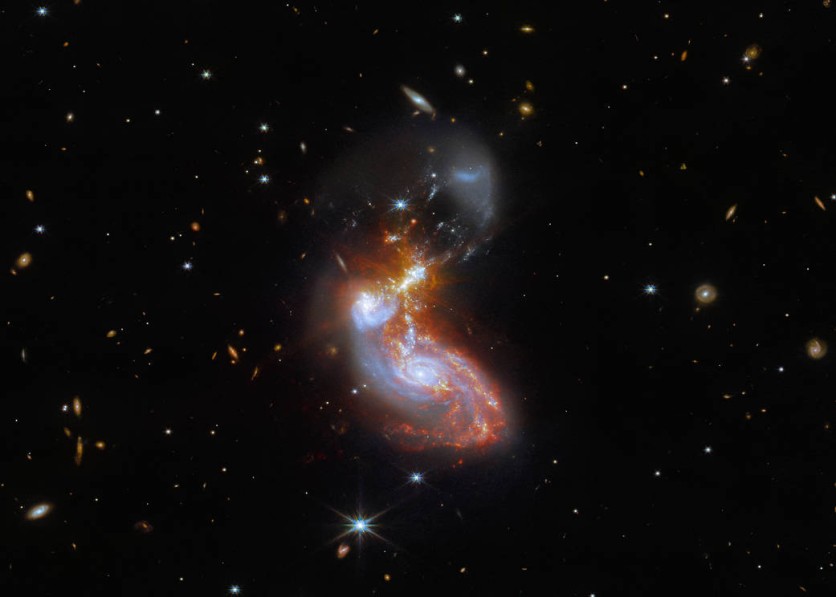Witnessing a galactic connection is not a rare sight for NASA's space telescopes. But it has surely never seen a connection as chaotic, strange, and disturbing as this!
NASA's new telescope James Webb has captured a merging galaxy pair set in a dark backdrop of glowing galaxies and stars. The high-resolution space image was released on Wednesday, Nov.30, on NASA's official website.

However, what makes this image more interesting is that it also became a diplomatic tool, for it was first seen by US Vice President Kamala Harris and French President Emmanuel Macron during their Wednesday visit to the space agency's headquarters in Washington.
Vice President Harris and President Macron also enjoyed a fresh composite image of the Pillars of Creation from Webb during the visit.
Ferocious Swirl
The image features II ZW 96, a star that is 500 million light-years away from Earth and is located near the celestial equator in the constellation Delphinus. The picture also contains a variety of background galaxies in addition to the ferocious swirl of the merging galaxies.
The two galaxies appear to have a disorganized, chaotic form because they are in the process of merging as one.
NASA explains that the spiral arms of the lower galaxy have been bent out of shape by the gravitational perturbation of the galaxy merger, and bright tendrils of star-forming areas join the brilliant centers of the two galaxies.
These star-forming areas attracted Webb to II ZW 96; the prominence of the star-forming regions makes the galaxy pair very luminous at infrared wavelengths.
More Luminous than the Sun
This observation comes from a group of Webb observations exploring the finer points of galaxy evolution, particularly in neighboring Luminous Infrared Galaxies like II ZW 96.
As their name implies, these galaxies have luminosities 100 billion times greater than the Sun, making them especially luminous at infrared wavelengths.
Soon after Webb was placed into operation, an international team of astronomers proposed a study of intricate galactic ecosystems, such as the merging galaxies in II ZW 96.
The Hubble Space Telescope and ground-based telescopes have already surveyed the targets they have picked, giving scientists a better understanding of Webb's capacity to decipher the nuances of intricate galactic settings.
This merging galaxy pair was photographed by the Near-Infrared Camera (NIRCam) and the Mid-Infrared Instrument (MIRI), two of Webb's state-of-the-art equipment.
Related Article : NASA's James Webb Space Telescope Reveals Never-Before-Seen Details of the Early Universe

ⓒ 2025 TECHTIMES.com All rights reserved. Do not reproduce without permission.




